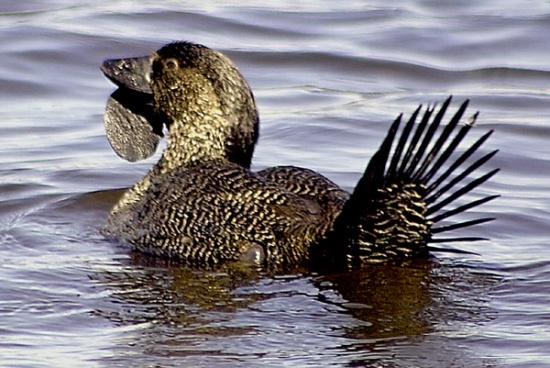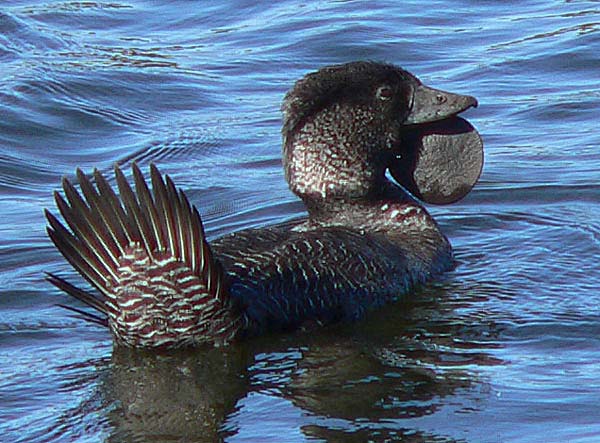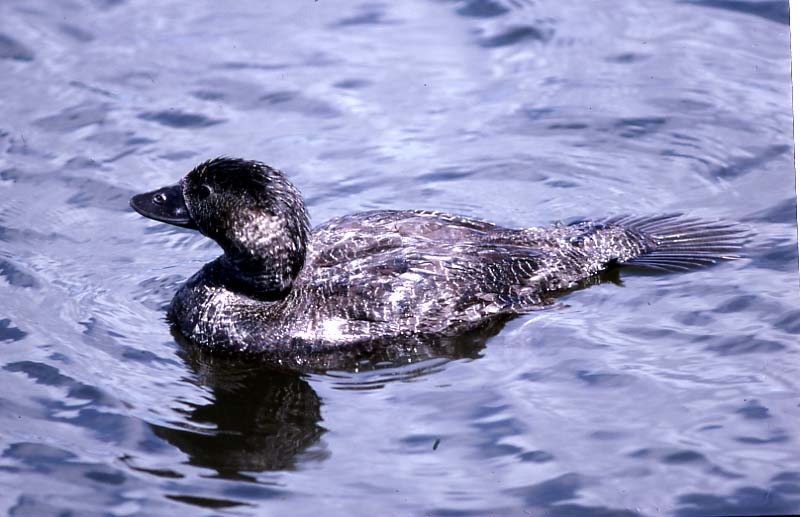
Biziura lobata
SUBFAMILY
Oxyurinae
TAXONOMY
Anas lobata Shaw, 1796, New South Wales = King George
Sound, Western Australia. Monotypic.
OTHER COMMON NAMES
English: Lobed duck; French: Erismature а barbillons; German:
Lappenente; Spanish: Malvasнa de Papada.
PHYSICAL CHARACTERISTICS
Male 26.0 in (66 cm), female 21.7 in (55 cm); male 4.0–6.9 lb
(1.81–3.12 kg), female 2.2–4.1 lb (993 g–1.84 kg). Male has
fleshy lobe underneath mandible.
DISTRIBUTION
Southwestern and southeastern Australia, Tasmania.
HABITAT
Freshwater wetlands with abundant reedbeds. Favors deep waters
of lagoons, estuaries, and coastlines in nonbreeding season.
BEHAVIOR
Males are very territorial early during the breeding season.
FEEDING ECOLOGY AND DIET
Feeds mostly by diving on aquatic invertebrates, amphibians,
some fish, and small ducklings.
REPRODUCTIVE BIOLOGY
No strong pair bond develops, probably polygamous. Breeding
mostly during Sept. to Oct. Commonly lays 2–3 eggs into a
concealed cup nest made of sticks and stems; incubation 24
days in captivity.
CONSERVATION STATUS
Not threatened. Locally abundant, but generally at low abundances.
May be threatened in future by habitat loss, fishing
nets, and hunting.
SIGNIFICANCE TO HUMANS
Hunted for food.
Photo Gallery of - Musk duck




 Animalia Life
Animalia Life